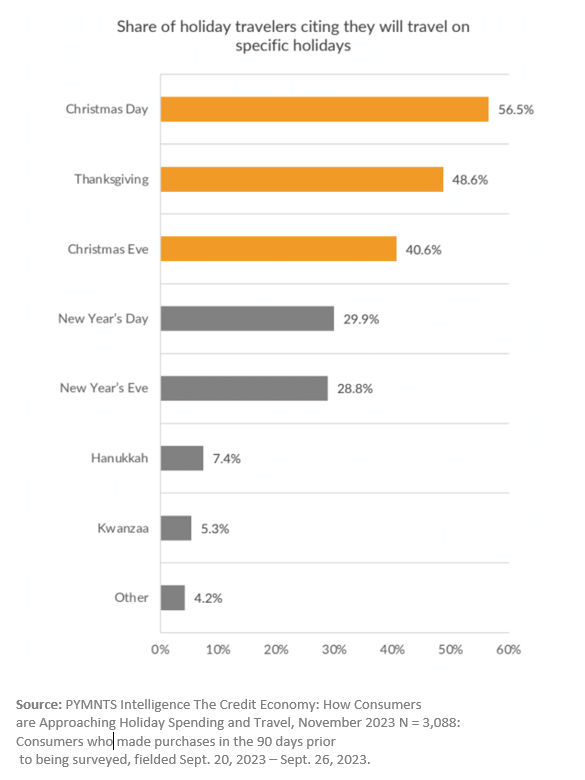
Consumers are doing whatever they can to be able to travel this holiday season, from cutting back on other purchases to funding their expenses with credit cards, according to PYMNTS Intelligence data. But one thing is sure: consumers aren’t willing to curb travel.
Consumers of all ages have spent more on experiences such as hotels, leisure flights, restaurants and tours in the last two years since the world has largely moved on from COVID-related precautions.
Even as prices rise, consumers have not stopped traveling. Instead, they find new ways to tighten their budgets and make traveling happen. According to a PYMNTS Intelligence survey, most planned trips are concentrated on Christmas, with nearly 57% of consumers saying they intend to do it for that specific date, while 40% plan to do it for Christmas Eve.
“The Credit Economy: How Consumers are Approaching Holiday Spending and Travel,” is a PYMNTS Intelligence and i2c research collaboration that examines consumer behaviors and attitudes related to holiday spending and explores drivers of interest in and usage of credit cards and BNPL.
The study shows that inflation and higher prices are leading U.S. consumers to cut holiday spending across most categories, except for gifts, to make ends meet. For example, 1 in 6 consumers plan to cut back on leisure travel this holiday season due to these concerns. By contrast, 46% say they will travel more this year than the previous one, and only 10% will travel less. This indicates that people intend to travel more but need to find ways to afford it.

In addition to this approach, consumers are inclined to keep spending at hotels, on flights, and in restaurants if they can pay in installments. Jacqueline White, president at i2c, stated in a recent interview with PYMNTS Intelligence, “All generations, particularly the youngest, are finding ways to finance their travel. Consumers are now using more BNPL or other flexible payment options for it, and this is something relatively new in the U.S.”
According to PYMNTS research, nearly 3 in 4 shoppers plan to use credit for holiday purchases, including leisure travel. Furthermore, 1 in 4 prefer buy now pay later (BNPL) as a better option to maintain cash flow. This flexible payment method is more popular among younger consumers, especially among Gen Z, with nearly 40% using it for this purpose. “Younger generations do not like debt as much as other older generations,” White said. “They are cautious about accumulating high-interest debts. Thus, they are drawing money from BNPL, as it allows them to better stretch their budget.”
White concluded, “It is important that financial institutions recognize an adaptation of their offering according to these preferences. The real appeal when it comes to BNPL is transparency regarding terms and conditions and payment flexibility.” As more and more consumers demand this payment option for their seasonal expenses, providing both flexibility and transparency may become crucial in attracting them.